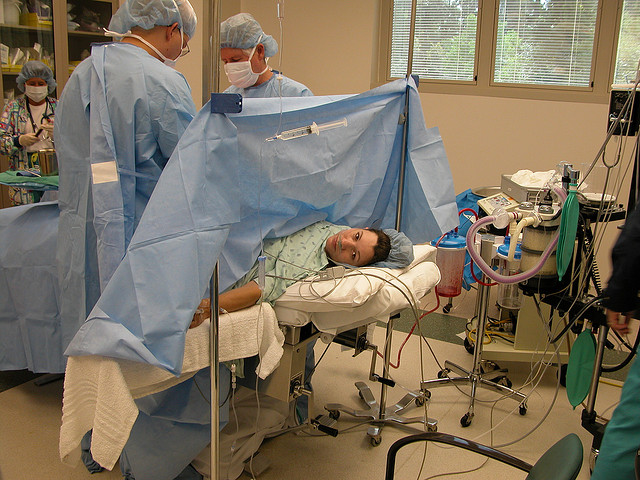News release
From:
Exposing C-section–delivered babies to vaginal microbes
Exposing infants born by caesarean-section (C-section) to their mothers’ vaginal fluids at birth results in the development of a microbiota—the community of microorganisms that inhabit the human body—that is similar to those of vaginally delivered babies, finds a study published online this week in Nature Medicine. Delivery method is a major determinant of a newborn’s microbiota, but this pilot study demonstrates that vaginal microbes can be partially restored in babies delivered by C-section.
Microbes present in vaginal fluids colonize the skin, oral cavity and gut of babies as they are born; these microbes collectively form the microbiota. This early microbial exposure and colonization influences development of the immune system and impacts metabolism and immune function later in life. Babies born via C-section, which accounts for more than 50% of total births in some countries, are not immediately exposed to these microbes and have a different microbiota at birth from those born vaginally.
Maria Dominguez-Bello, Jose Clemente and colleagues report a procedure, termed vaginal microbial transfer, in which four infants were swabbed immediately after a C-section birth with gauze that had been incubated in the infant’s mother’s vagina for one hour prior to the C-section procedure. They then compared the babies’ microbiota to that of seven C-section–born infants not exposed to vaginal fluids and of seven infants born vaginally. They found that, 30 days after birth, C-section–born infants exposed to vaginal fluids had a microbiota that was more similar to that of vaginally born infants than to C-section–born infants not exposed to vaginal fluids.
However, the authors also found that the vaginal microbial transfer was not complete and that the procedure did not transfer all of the microbes present in vaginally born infants. The authors did not investigate long-term clinical outcomes in these infants, and thus it remains unclear whether exposure to vaginal microbes has any durable effects on the makeup of the microbiota and/or the health of these babies.
In an accompanying News & Views article, Alexander Khoruts writes that the authors “have taken an important first step toward developing active interventions that may someday enhance the introduction of the newborn to microbial partners and facilitate a life-long healthy symbiotic relationship”. However, he highlights additional limitations, including the small sample size and the short duration of the study.
Expert Reaction
These comments have been collated by the Science Media Centre to provide a variety of expert perspectives on this issue. Feel free to use these quotes in your stories. Views expressed are the personal opinions of the experts named. They do not represent the views of the SMC or any other organisation unless specifically stated.
Associate Professor Andrew Holmes is from the Discipline of Microbiology in the School of Molecular Bioscience and the Charles Perkins Centre at the University of Sydney
The concept of a vaginal wipe for C-section babies is controversial and is based on a well-known phenomenon that for the first 3 to 6 months of life C-section babies have a different gut microbiota to vaginal birth babies. There is some concern that this may impact development of the gut microbiome and later health. These concerns arise from associations (and generally weak associations) between C-section and some modern lifestyle diseases that have been reported.
However, this paper adds absolutely nothing to the testing of the proposition that impact of C-section birth on later health is an issue at all, but rather jumps straight into the idea that vaginal wipes may change the phenomenon and then does not collect enough data to say anything!
It is essentially meaningless in terms of scientific insight or clinical application. They have set out to test a solution to an idea that few in the area think is likely to be a significant issue (albeit one that does require testing). Then they have not collected enough data to actually meaningfully comment on the outcome. They show that a gauze wiped on the vagina has the same microbes present as the vagina – hardly an earth-shattering observation!
They then show that if you wipe that gauze loaded with vaginal microbes on the outside surface of a baby then the microbes don’t grow on that babies skin, or mouth. Again hardly surprising, microbes grow only in the places they are adapted to grow. The one site that might actually be useful is the anus (as it is more related to gut microbiota) and they don’t collect enough data to say anything as there are very few samples collected from this treatment group (see supplementary Figure 3 in the paper).
The available data shows no significant difference. All this article does is raise doubts in women's minds about the implications of a C-section birth and leave them prone to considering an intervention that did not appear to work.



 International
International



